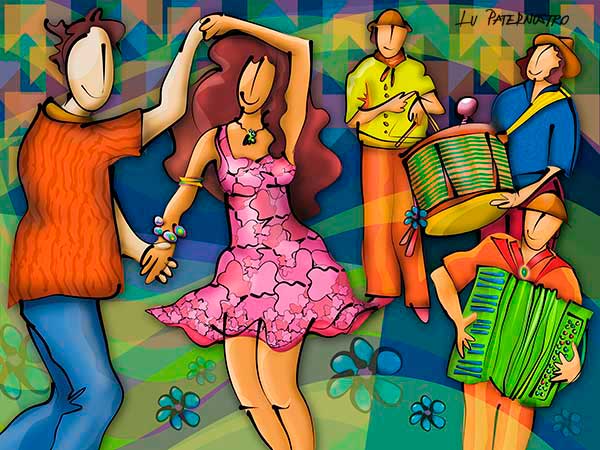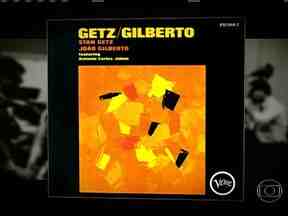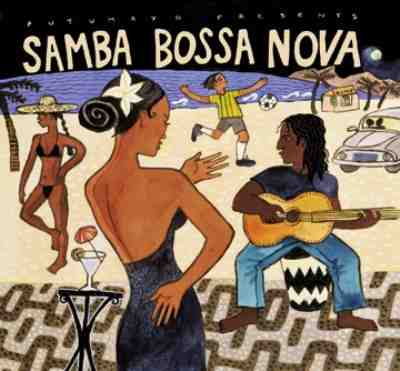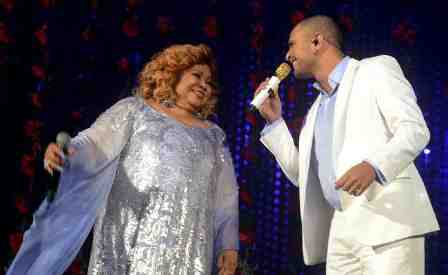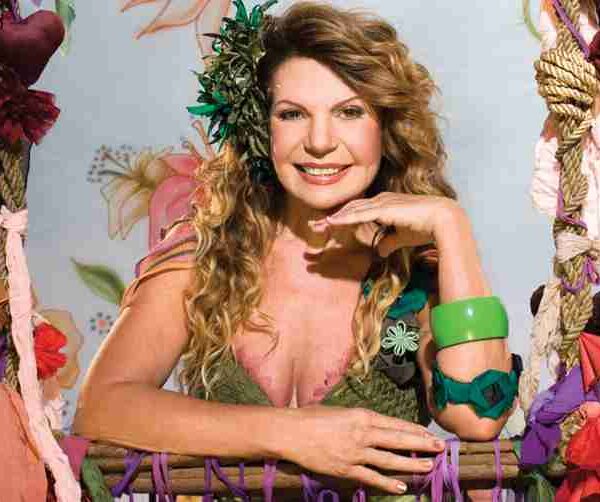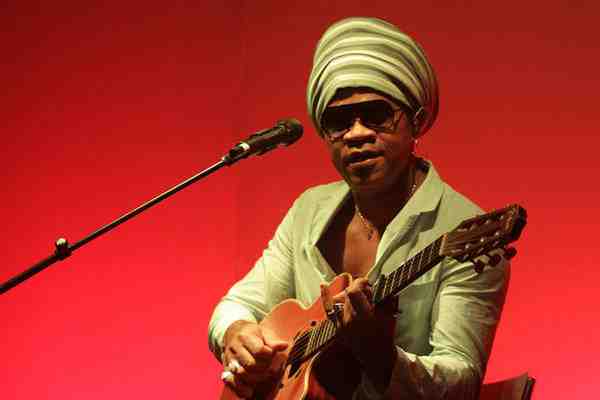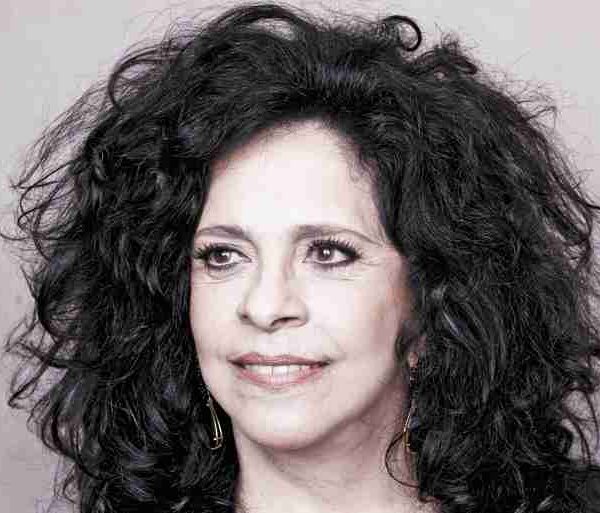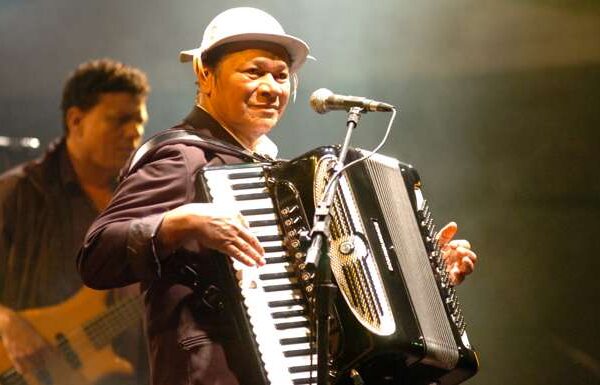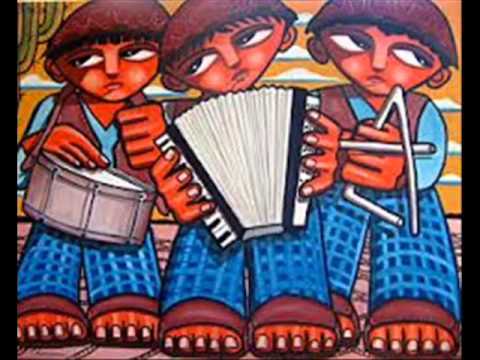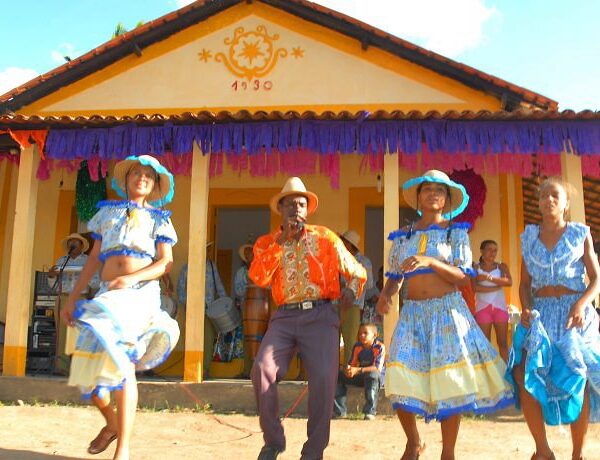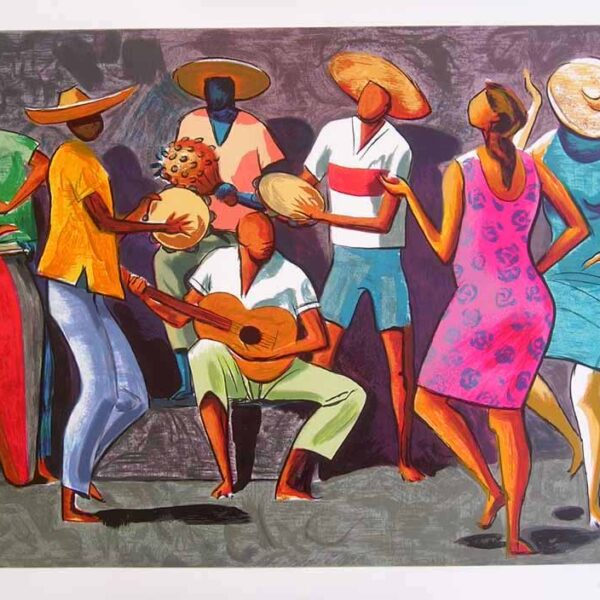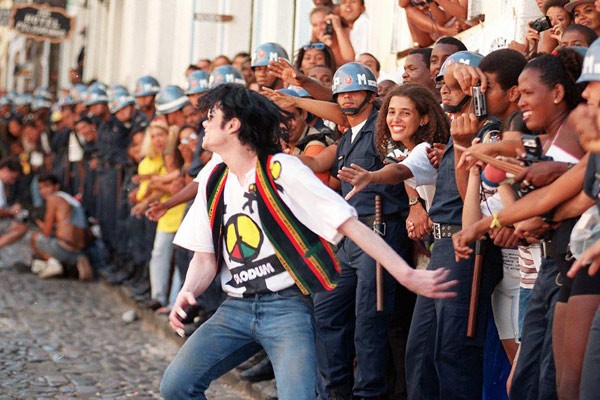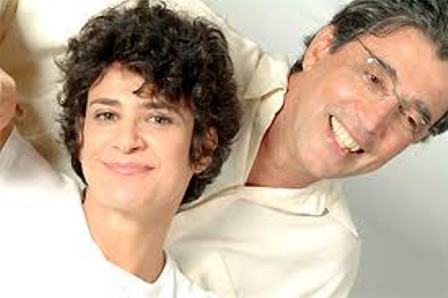Jackson do Pandeiro: Biography and History José Gomes Filho, known as Jackson do Pandeiro (the King of Rhythm), was born on 30 August 1919 and died on 10 July 1982. He was an important instrumentalist, composer and singer who recorded a number of forrós and sambas and helped to popularise […]
Northeastern Brazilian music
Northeastern Brazilian Music: Rhythms, Composers and Cultural Heritage
1. Rhythms and musical genres of the Northeast
Baião, Xote, Xaxado and Côco
- Luiz Gonzaga (Pernambuco) is considered the forerunner of baião, the rhythm that became the basis of forró. In addition to him, other artists such as Dominguinhos, Sivuca, Jackson do Pandeiro and Waldonys contributed significantly to the popularisation and development of these styles. Together with xote, xaxado and côco, baião forms the backbone of forró, one of the most representative musical styles of the Northeast.
- Jackson do Pandeiro, for example, is known for his ability to mix baião with other northeastern rhythms such as xaxado and côco to create a unique sound.
Frevo
- Originating in the states of Pernambuco and Paraíba, frevo is a fast-paced rhythm whose steps are reminiscent of capoeira and is closely linked to carnival. Artists such as Alceu Valença, Elba Ramalho and Geraldo Azevedo have helped to define this genre, which has gained national and international renown.
- The Grande Encontro, with Alceu Valença, Elba Ramalho, Geraldo Azevedo and Zé Ramalho, is one of the most remarkable performances of this genre.
Tropicalism
- Tropicalism, a movement that began in the 1960s, is a milestone in Brazilian music, strongly influenced by the anthropophagic movement. Created by artists such as Caetano Veloso and Gilberto Gil, Tropicalism mixed elements of Brazilian music with international influences, creating a revolutionary sound for the time.
- Tom Zé and Os Mutantes were also part of the movement, which sought to break down the barriers of Brazilian popular music and integrate national culture with foreign influences.
Axé music
- In the 1980s, Luiz Caldas pioneered the creation of the Axé Music genre, which mixed elements of frevo, bossa nova, rock and other styles. The movement gained momentum with artists such as Daniela Mercury, Chiclete com Banana, Olodum and Timbalada.
- Axé became one of the main rhythms of the Salvador Carnival, replacing Frevo at many parties and performances. It helped make the Bahian Carnival one of the biggest in the world, attracting tourists from all over the world.
Mangue Beat
- Mangue Beat emerged in Pernambuco in the 1990s, a fusion of rock, hip-hop, maracatu and electronic music. This cultural movement was created by Chico Science and the band Nação Zumbi, who innovated by mixing the tradition of maracatu with more modern sounds.
- Mangue Beat not only influenced music, but also had a major impact on the cultural and artistic scene in Recife and throughout the Northeast.
2. Artists and regional contributions
Ivete Sangalo
- Ivete Sangalo is undoubtedly one of the biggest stars in Brazilian music today. Not only is she Brazil’s most popular artist, but she also has international recognition. Ivete is the sales leader in the Brazilian music market and her ability to attract fans is phenomenal, as evidenced by her historic performance at Rock in Rio Lisboa in 2004, where she broke attendance records.
- In addition to her musical career, Ivete owns the company Caco de Telha, which promotes major events in Brazil, including concerts by international artists such as Beyoncé and Cirque du Soleil.
João Gilberto
- João Gilberto is widely regarded as the creator of the Bossa Nova style, which has become one of the most famous and respected Brazilian rhythms in the world. Along with Antonio Carlos Jobim, Vinicius de Moraes and Luiz Bonfá, João Gilberto formed the quartet responsible for bringing Bossa Nova to the world stage, especially after their performance at Carnegie Hall in 1962.
Raul Seixas
- Born in Bahia, Raul Seixas was one of the central figures of Brazilian rock. His innovative music and deeply philosophical lyrics stood out especially in the context of Jovem Guarda. Raul was also a pioneer in introducing mystical and existential themes into Brazilian rock.
- Pitty, also from Bahia, is another very successful artist in contemporary Brazilian rock, who has been gaining prominence since the 2000s.
Reginaldo Rossi and Waldick Soriano
- Reginaldo Rossi and Waldick Soriano are the main exponents of brega in Brazil. This genre, characterised by romantic lyrics and simple melodies, has a loyal following in the Northeast and throughout Brazil.
3. Other highlights and musical diversity
Repente and Cego Aderaldo
- Repente is a genre of popular Northeastern poetry that involves improvised rhymes, one of the main icons of which is Cego Aderaldo, who stood out for his ability to improvise verses quickly and creatively.
Tribo de Jah and reggae in Maranhão
- Tribo de Jah is one of the most important reggae bands in Maranhão and Brazil, with international recognition. Maranhão is also a great stronghold of the tambor de crioula, one of the region’s most traditional cultural manifestations.
The History of Forró: Origins and Development
Forró has its origins in the public dances held at the end of the 19th century and called “forrobodó”, “forrobodança” or “forrobodão”. Exploring the history of forró reveals how these dances developed into the lively cultural expression we know today. At that time, it was necessary to form the floor […]
History of Bossa Nova – When Bossa Nova conquered the world
Bossa Nova: “The Girl From Ipanema” with Frank Sinatra Bossa Nova, which had been developing since 1962, was firmly established with the album Getz/Gilberto – a collaboration between Stan Getz and João Gilberto, featuring Antonio Carlos Jobim. Album Recognition I do not recall seeing anything significant in the Brazilian media […]
João Gilberto: The Father of Bossa Nova
Biography of the Bahian singer-songwriter João Gilberto João Gilberto do Prado Pereira de Oliveira (Juazeiro, 10 June 1931 – Rio de Janeiro, 6 July 2021), better known as João Gilberto, is a Brazilian musician considered the creator of the bossa nova rhythm. João Gilberto was given a guitar at the […]
Alcione: The Journey of a Music Icon
Biography of the Maranhão Singer Alcione Alcione, born on November 21, 1947, in São Luís, Maranhão, lived her youth in Rio de Janeiro and began her professional career at the age of 20. Since she was young, influenced by her father, a police officer and member of his corporation’s band, […]
Alceu Valença: A Journey Through His Music
Biography of the Pernambuco Singer and Composer Alceu Valença Alceu Paiva Valença, better known as Alceu Valença, is a renowned singer and composer from Brazil, born on July 1, 1946 in São Bento do Una, Pernambuco. From a very young age, Alceu showed a passion for music, being encouraged by […]
Elba Ramalho: A Journey Through Music History
Biography of the singer Elba Ramalho Elba Maria Nunes Ramalho, or simply Elba Ramalho, is the fourth daughter of the couple João Nunes de Souza and Maria Geni Ramalho. Their children, in order, are: Everaldo, Everton, Ednovalda (Vavá), Elba, Eracliton, and João Nunes Filho, all born in Conceição/PB. Beginning of […]
Carlinhos Brown: Biography of a Percussion Legend
Biography of Singer and Composer Carlinhos Brown Carlinhos Brown, stage name of Antônio Carlos Santos de Freitas, was born in Salvador on November 23, 1962. He is a renowned singer, percussionist, composer, producer, and cultural agitator from Brazil. In Spain, he is also known as Carlito Marrón. Origin of the […]
Gal Costa: Biography of a Musical Icon
Biography of Singer Gal Costa Gal Costa, stage name of Maria da Graça Costa Penna Burgos, was born in Salvador on September 26, 1945. She is a renowned Brazilian singer, having sold around 500 million records throughout her career. Family and Early Influences Gal is the daughter of Mariah Costa […]
Biography of Dominguinhos, the accomplished accordionist
The life and work of Dominguinhos: The Master of the Brazilian Sanfona José Domingos (Garanhuns, 12 February 1941), known as Dominguinhos, was a Brazilian instrumentalist, vocalist and composer. His contribution to Brazilian music is undeniable, especially with regard to the accordion and its various styles. 1. Early years Neném do […]
Forró Pé-de-Serrra: The Heart of Brazilian Music
Triangle, Accordion, and Zabumba: The Foundation of Forró Pé-de-Serra – Forró Pé-de-Serra in the Northeast The Growth of Forró Pé-de-Serra Forró pé-de-serra is the fastest-growing musical style in Brazil today. There are specialized forró houses and a true recording industry exploring this rhythm throughout the country. Popularity in São Paulo […]
Origins and evolution of forró in São João festivities
The style of forró has gone through three major phases since it emerged in the 1940s. Evolution causes dispute, but formats can coexist, say critics. This week begins the main moment of the forró marathon at the São João festivities in the Northeast. As the official night of the saint’s […]
Biography of Luiz Gonzaga
Luiz Gonzaga (1912-1989) was a Brazilian musician. He was an accordion player, singer and songwriter, and received the title of “King of Baião”. He was responsible for the valorization of the Northeastern rhythms, took the baião, xote and xaxado, to the whole country. The song “Asa Branca” made in partnership […]
Music and Rhythms of the Brazilian Northeast
It is impossible to think about the culture of Brazil without considering the music and rhythms of the Northeast, the themes and inventiveness of Northeast music – a mix of influences in which tradition and renewal coexist. In all of Brazil, the Northeast is the region that most zealously preserves […]
Gilberto Gil – Biography, history and musical legacy
Biography of Gilberto Gil Gilberto Gil is one of the greatest personalities in Brazilian music, recognised worldwide. His international career has already earned him a Grammy in the Best World Music Disc category in 1998 and a Latin Grammy in 2003. Gilberto Gil (born Gilberto Passos Gil Moreira) was born […]
Musical Style and History of Samba de Roda
Samba de roda is a more primitive musical variant of samba, originating in the Brazilian state of Bahia, probably in the 19th century. The traditional Afro-Brazilian musical style is associated with a dance, which in turn is associated with capoeira. It is played by an ensemble of pandeiro, atabaque, berimbau, […]
Biography of Ivete Sangalo
Ivete Sangalo was born in Juazeiro, in the interior of Bahia, into a family of musicians. She started singing as a child and, at school, took advantage of her breaks to play the guitar. At family soirees, he played percussion. He moved to Salvador when he was 17 and worked […]
History of the Salvador Carnival
Salvador’s carnival is today the biggest festival of popular participation on the planet. During six days of carnival, around 2 million revellers walk the circuits, baptised Batatinha, Dodô and Osmar. But it wasn’t always like this. Until the end of the 19th century, the petty bourgeoisie and the elite enjoyed […]
Olodum with Michael Jackson in Salvador de Bahia
The band Olodum paid tribute to Michael Jackson in Salvador today. At Largo do Pelourinho, where the American star recorded part of the clip for the song “They Don’t Care About Us” with the group in February 1996, 30 musicians from the band gathered to play for those passing by. […]
Biography of Dorival Caymmi
With a body of work characterised by beach themes and songs that highlight the beauty of his homeland, Dorival Caymmi is considered one of the greatest composers of Brazilian popular music. The grandson of Italians, his grandfather came to the state to work on the renovation of the Lacerda Elevator, […]
Biography of Caetano Veloso
Biography of the Bahian Caetano Veloso (Caetano Emanuel Viana Telles Veloso) who never imagined that, coming out of a small town in the Recôncavo Baiano, he would be so successful throughout Brazil and be one of the main expressions of Brazilian Popular Music. But that’s what happened. Born on 7 […]
Biography of Daniela Mercury
Daniela Mercury, stage name of Daniela Mercuri de Almeida (Salvador, 28 July 1965). Daniela Mercury is a Brazilian singer, songwriter, dancer, producer, actress and television presenter. Winner of a Latin Grammy for her album Balé Mulato, she has also received six TIM Music Awards, one APCA award, three Multishow awards […]
Biography of Maria Bethania
Maria Bethania Viana Teles Veloso, better known as Maria Bethânia (Santo Amaro da Purificação, Bahia, 18 June 1946). Maria Bethania is a Brazilian singer who has the record of being the second best-selling female artist in Brazil, and the biggest in MPB, with 26 million copies. She goes by the […]
Biography of Simone Bittencourt
Singer Simone Bittencourt was born in Salvador, the capital of Bahia, at Christmas 1949. She was therefore to be baptised Natalina, but the name Simone Bittencourt de Oliveira prevailed in the final decision. The family doctors said that the newborn Simone Bittencourt would have a characteristic common to the other women […]
Biography of Os Novos Baianos
The Novos Baianos was formed in Bahia in the 1960s by Paulinho Boca de Cantor, Pepeu Gomes, Moraes Moreira, Dadi, Galvão, Jorginho, Baixinho, Bolacha and Baby, and debuted with the show “Desembarque dos Bichos Depois do Dilúvio Universal” in 1968. The Novos Baianos took part in TV Record’s V Festival […]
The Origin and History of Carnival in Brazil
The origin of Carnival is a controversial subject. Some historians associate the beginning of the carnival festivities with the cults performed by the ancients to praise good agricultural harvests, ten thousand years before Christ. Others say that it began later, in Egypt, in honour of the goddess Isis and the […]
Biography of Morais Moreira
Antônio Carlos Moreira Pires (Morais Moreira) was born in Ituaçú BA on 8 July 1947. Raised in the backlands of Bahia, from an early age Morais Moreira played the accordion, which he later replaced with the guitar. In 1966 Morais Moreira moved to Salvador BA and came into contact with […]
Biography of Carmen Miranda
When in 1939 Carmen Miranda recorded one of her most famous renditions, “O Que É Que a Baiana Tem”, composed by the novice but already brilliant Dorival Caymmi (who also took part in the recording), both she and he (and his studio colleagues) considered the sound quality of the discs […]
Biography of Raul Seixas
Rual Seixas (Raul dos Santos Seixas) was born in Salvador, Bahia, on 28 June 1945, the son of Raul Varella Seixas and Maria Eugênia Seixas. Rual Seixas is from the same region and generation as Gilberto Gil, Caetano Veloso and Gal Costa, among many others who defined the movement called […]

